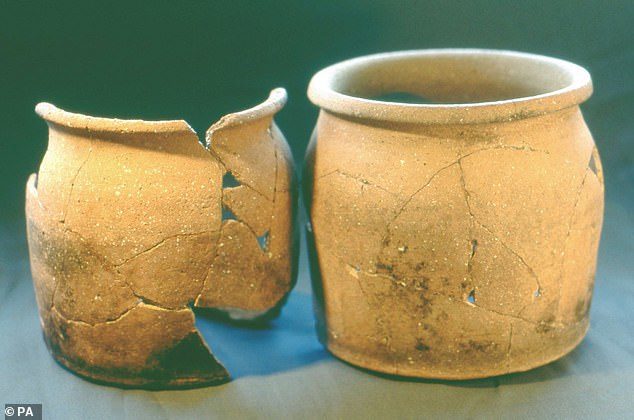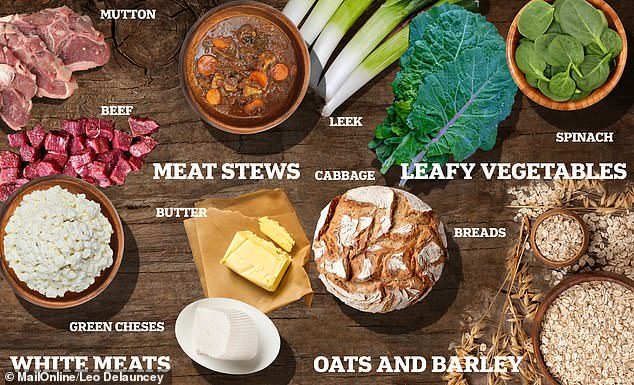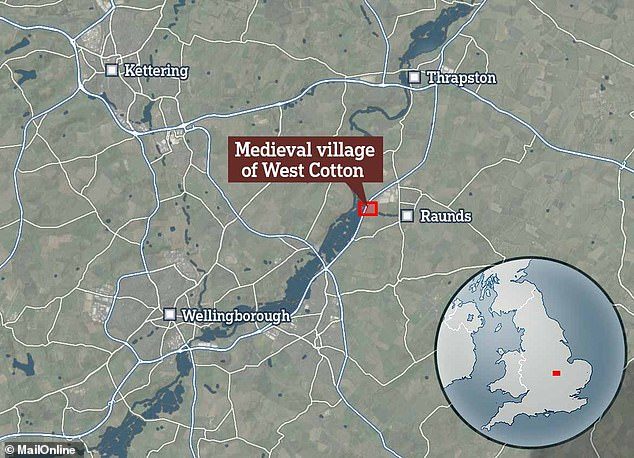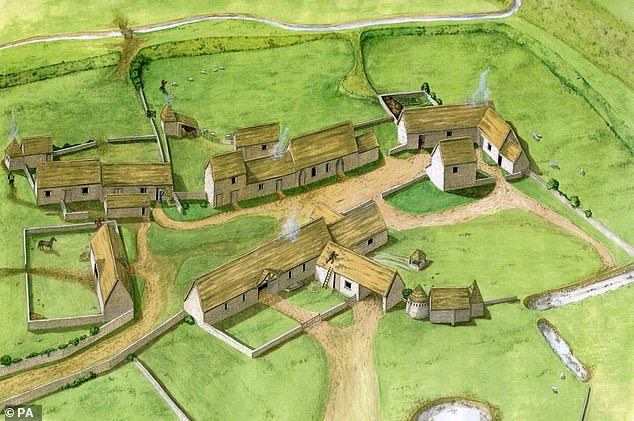
English peasants in Medieval times lived on a combination of meat stews, leafy vegetables and dairy products which scientists say was healthier than modern diets. Food residue inside 500-year-old pottery at the medieval town of West Cotton in Northamptonshire revealed the eating habits of normal folk.
They would have dined on bread and so-called 'white meats' - a term used by peasants which included butter and various cheeses. Poor people couldn't afford finer delicacies like fish but the presence of oats and barley proves they had access to carbohydrates, likely in the form of bread.
Experts from the University of Bristol identified lipids, fats, oils and natural waxes from the ceramics. They found the surprisingly well-rounded diet of the peasants would have kept them well-fed and adequately nourished.

'The medieval peasant had a healthy diet and wasn't lacking in anything major! 'It is certainly much healthier than the diet of processed foods many of us eat today.A range of historical documents and accounts were also examined for the study, which is published in the Journal of Archaeological Science.
'The meat stews (beef and mutton) with leafy vegetables (cabbage, leek) would have provided protein and fibre and important vitamins and the dairy products (butter and 'green' cheeses) would also have provided protein and other important nutrients. These dairy products were sometimes referred to as the "white meats" of the poor, and known to have been one of the mainstays of the medieval peasants diet.
'There was also a bakehouse on the site and we also found plant remains of oats and barley - these would have provided carbohydrate. The barley was probably used to make bread and oats may have been added to stews to make "pottages" and "bulk" them out.'
Historical documents state that medieval peasants ate meat, fish, dairy products, fruit and vegetables. But the researchers say that before their study there was little direct evidence to support this.
Dr Julie Dunne at the University of Bristol told MailOnline: 'The medieval peasant had a healthy diet and wasn't lacking in anything major! 'It is certainly much healthier than the diet of processed foods many of us eat today'

The lack of knowledge about what the majority of the population survived on stands in stark contrast.
Dr Dunne said: 'All too often in history the detail, for example food and clothing, of the everyday life of ordinary people is unknown.
'Traditionally, we focus on the important historical figures as these are the people discussed in ancient documents. Much is known of the medieval dietary practices of the nobility and ecclesiastical institutions, but less about what foods the medieval peasantry consumed.'The researchers also looked at butchery techniques, methods of food preparation and rubbish disposal at West Cotton.
Historical documents state that medieval peasants ate meat, fish, dairy products, fruit and vegetables.
But the researchers say that before their study there was little direct evidence to support this.
Dr Dunne added: 'Food and diet are central to understanding daily life in the medieval period, particularly for the medieval peasant.
'This study has provided valuable information on diet and animal husbandry by medieval peasants and helped illustrate agricultural production, consumption and economic life in one of England's early medieval villages.'




The ale would have been a safe form of hydration.
English monasteries kept extensive agricultural records about surrounding communities